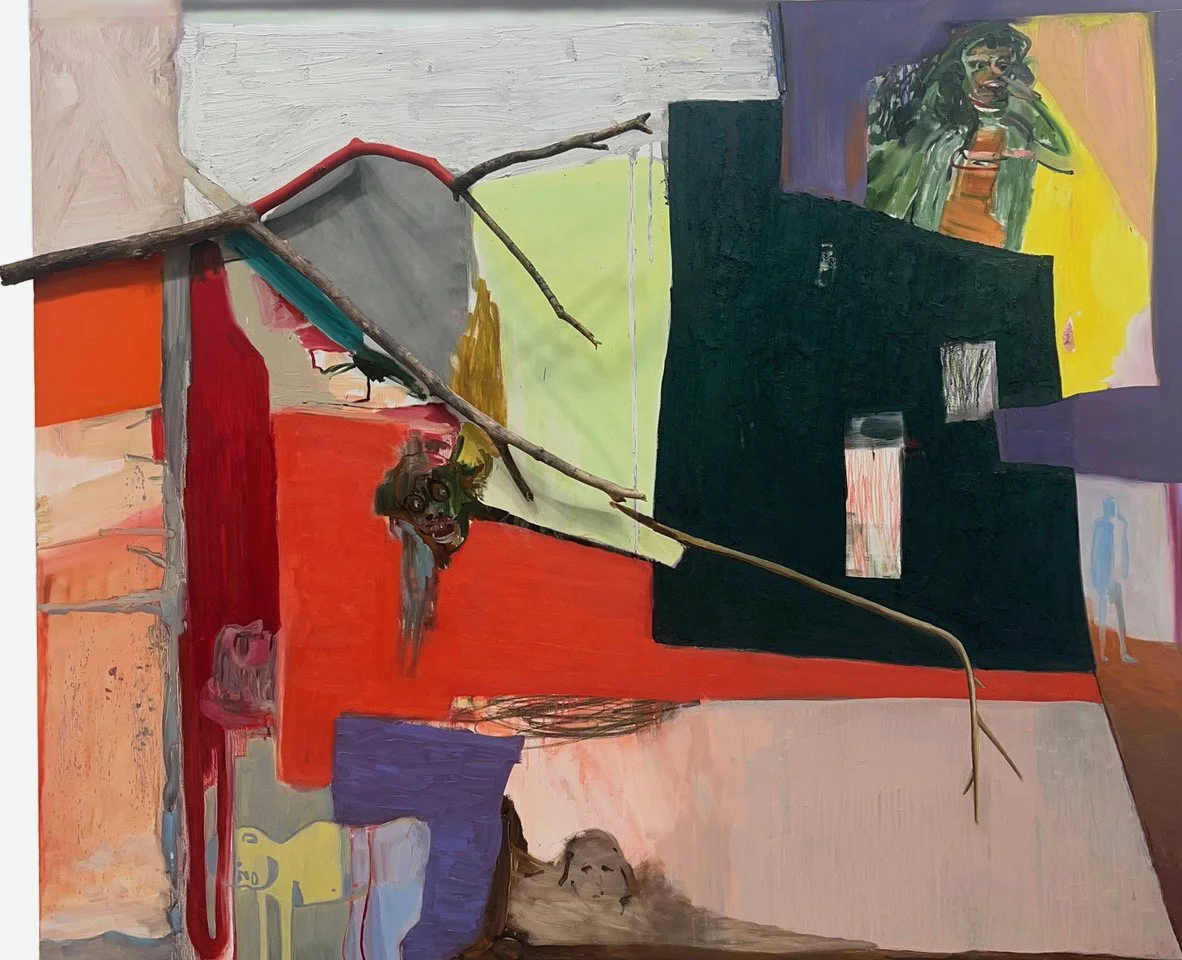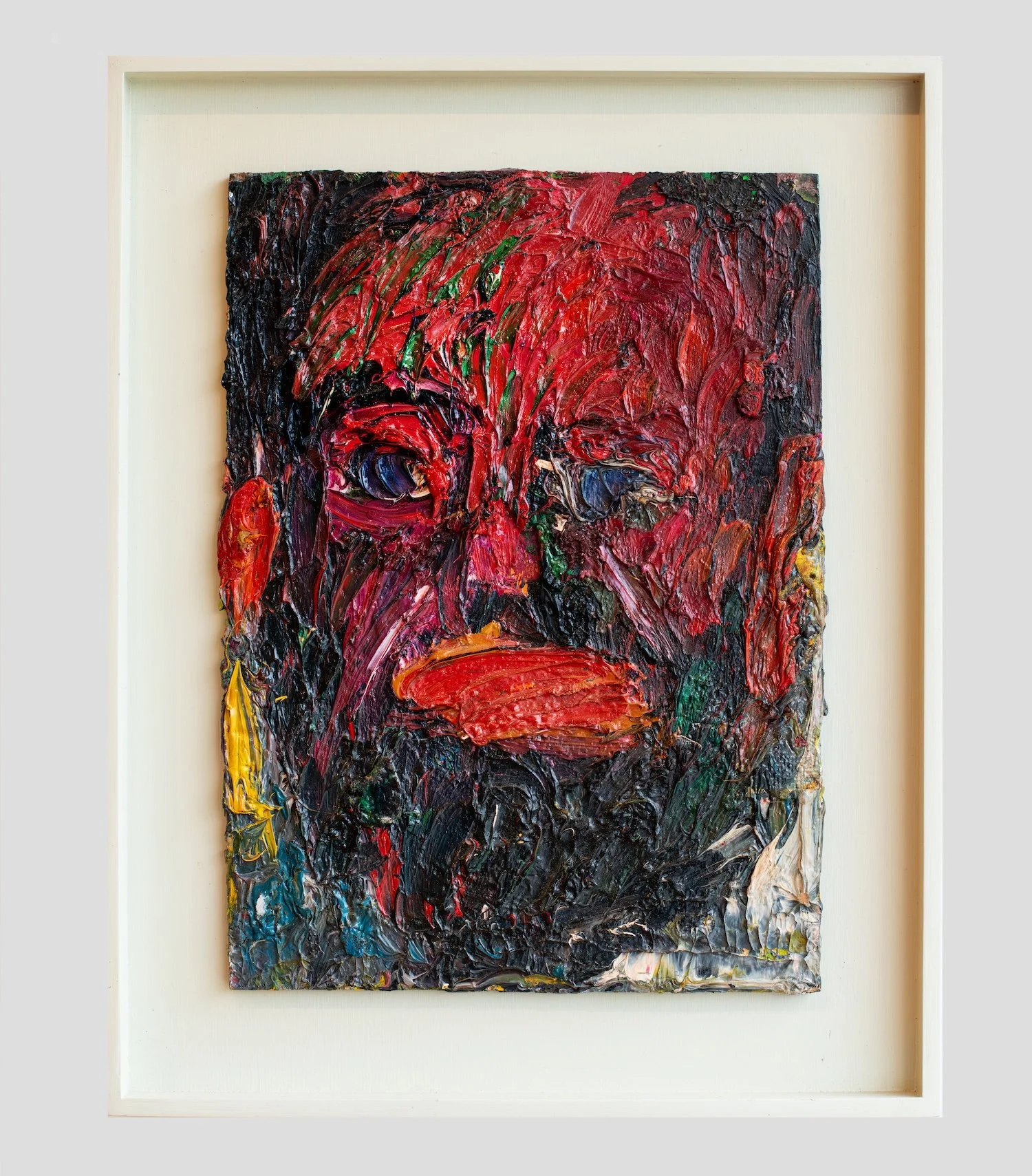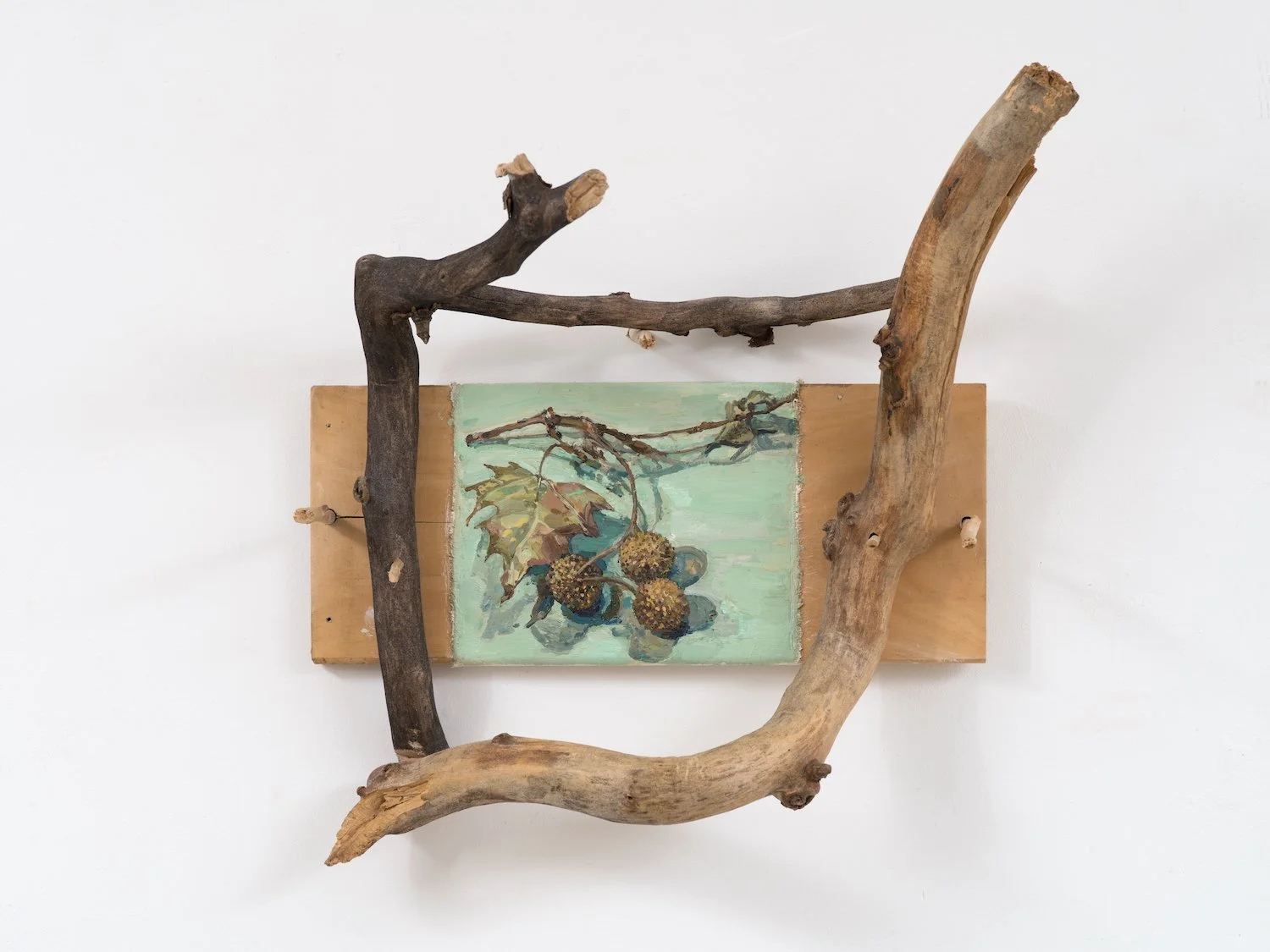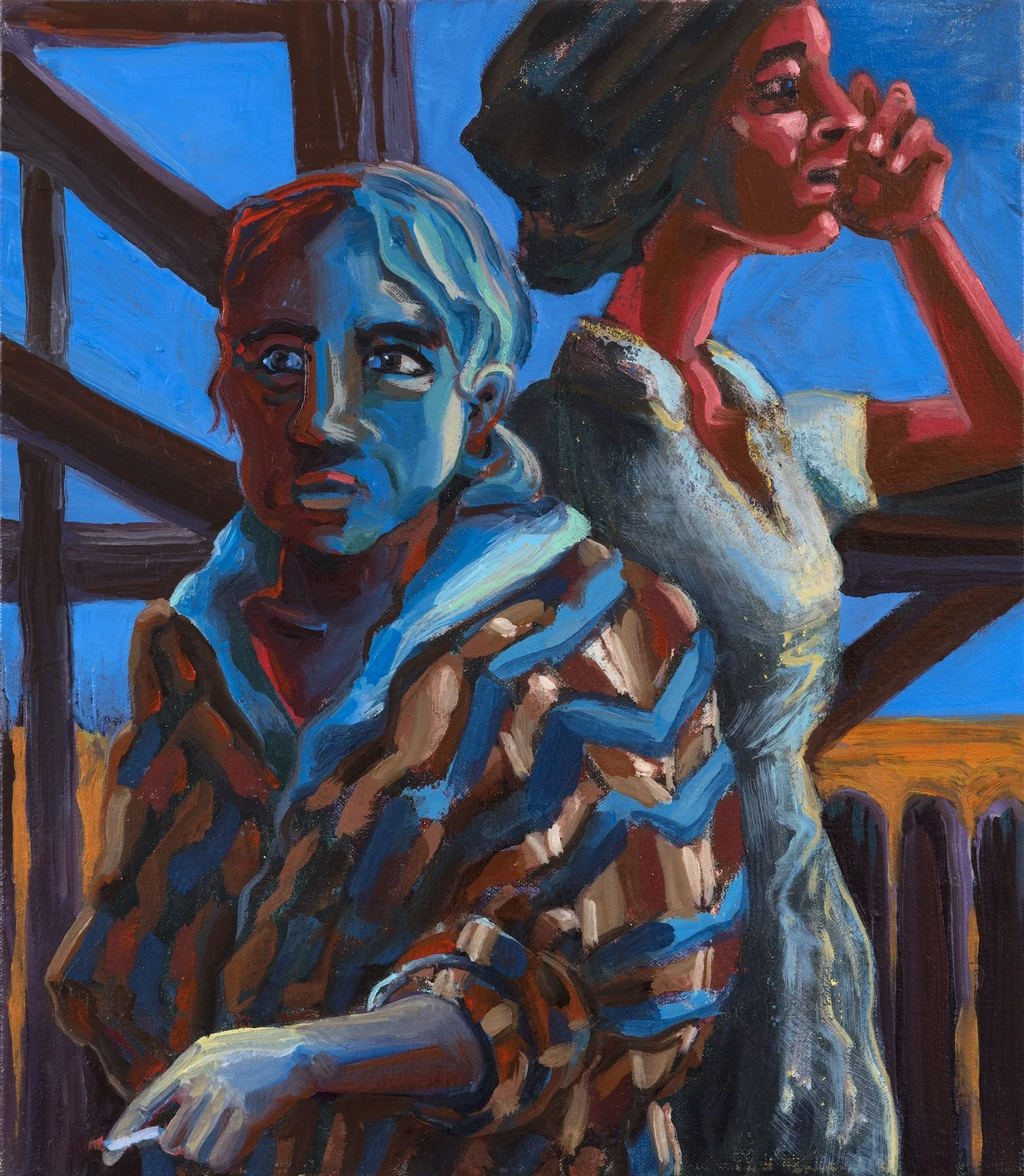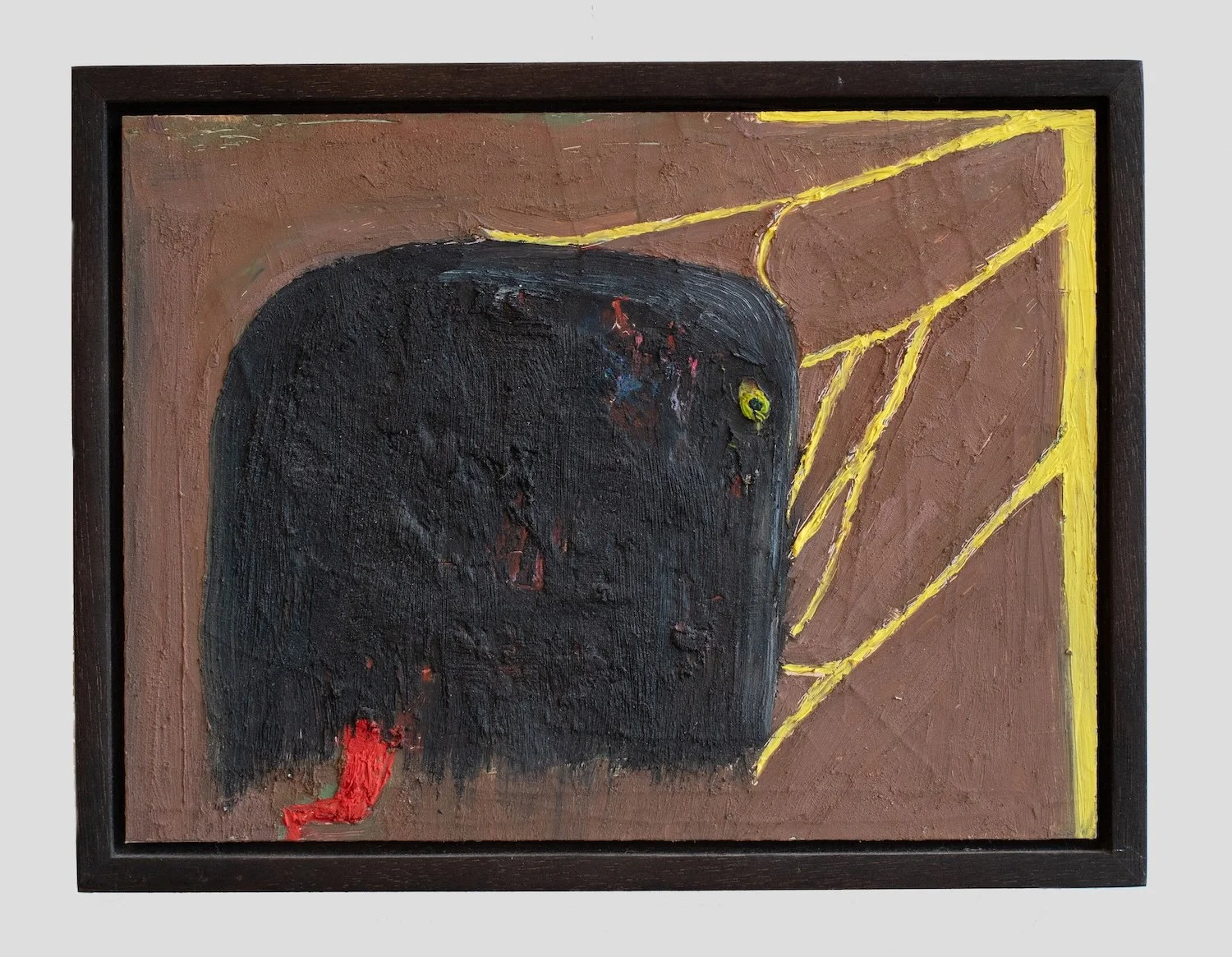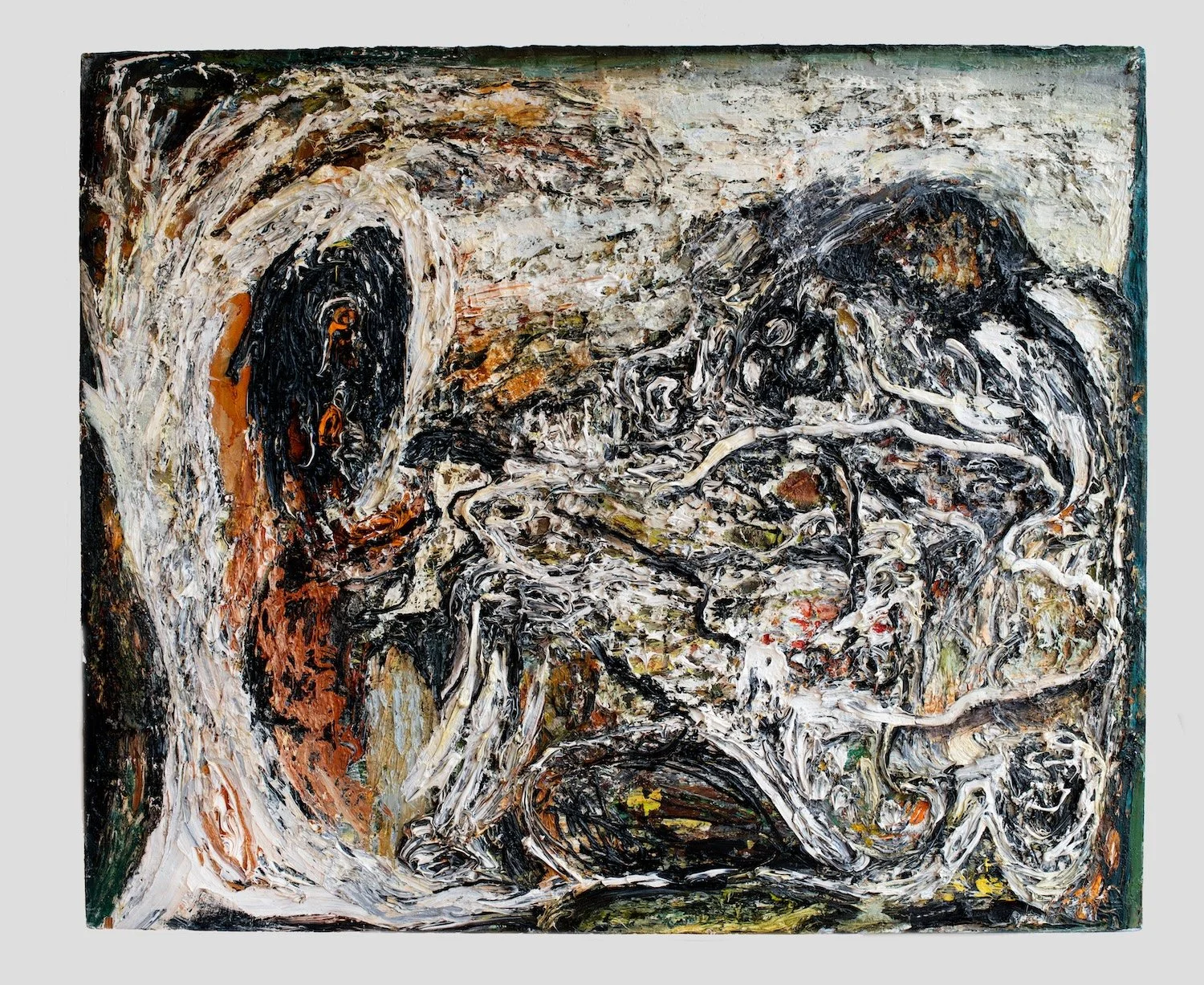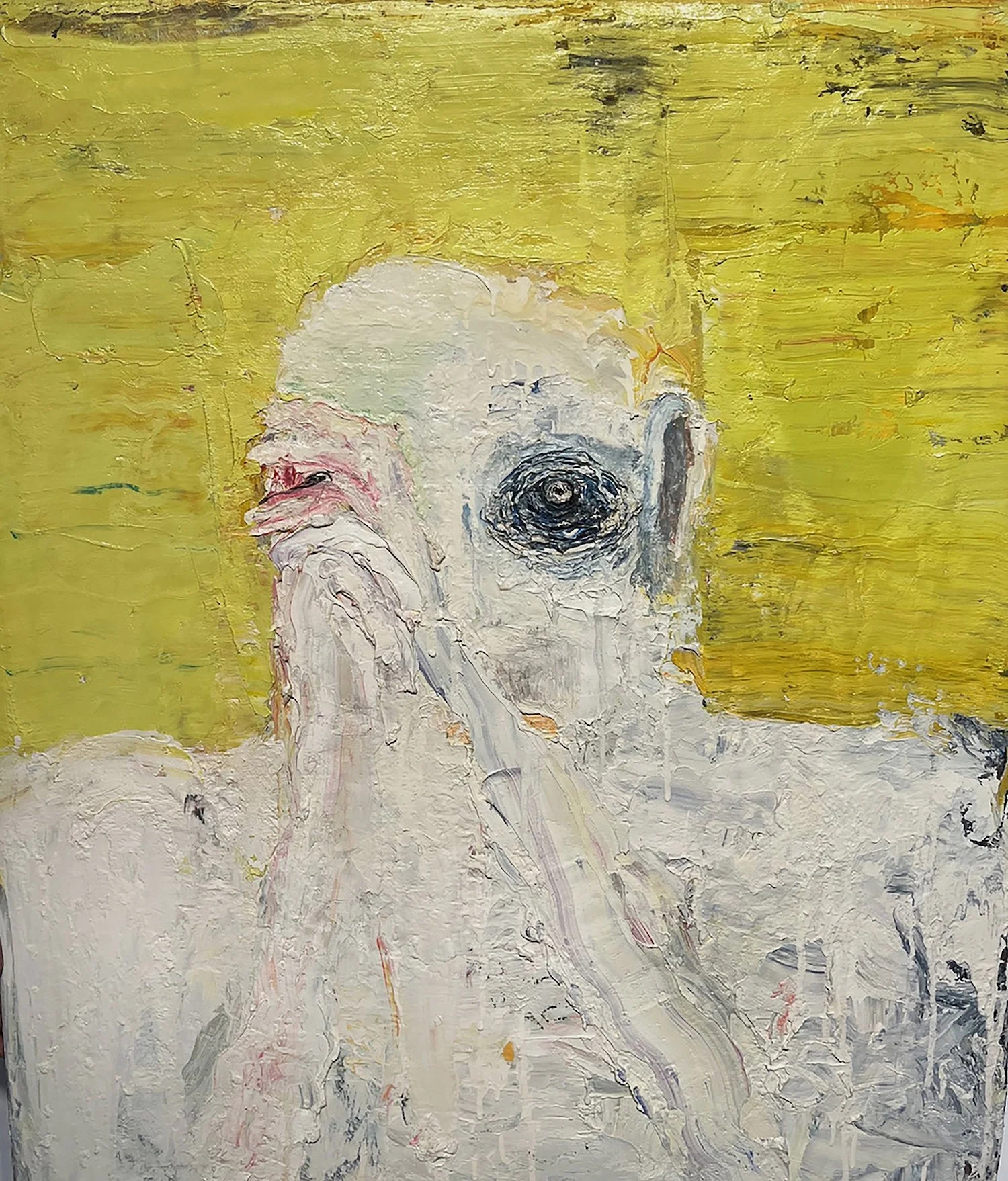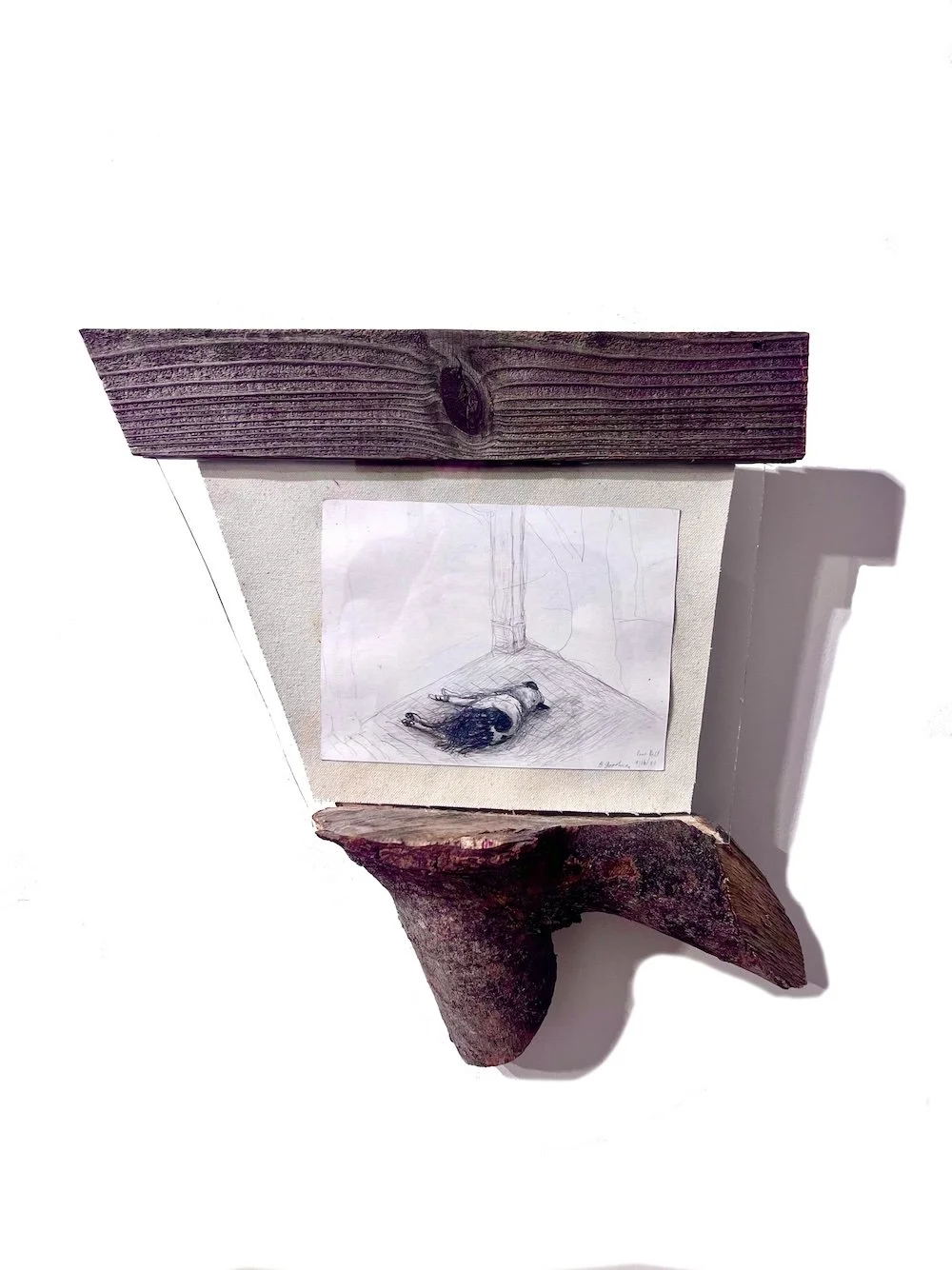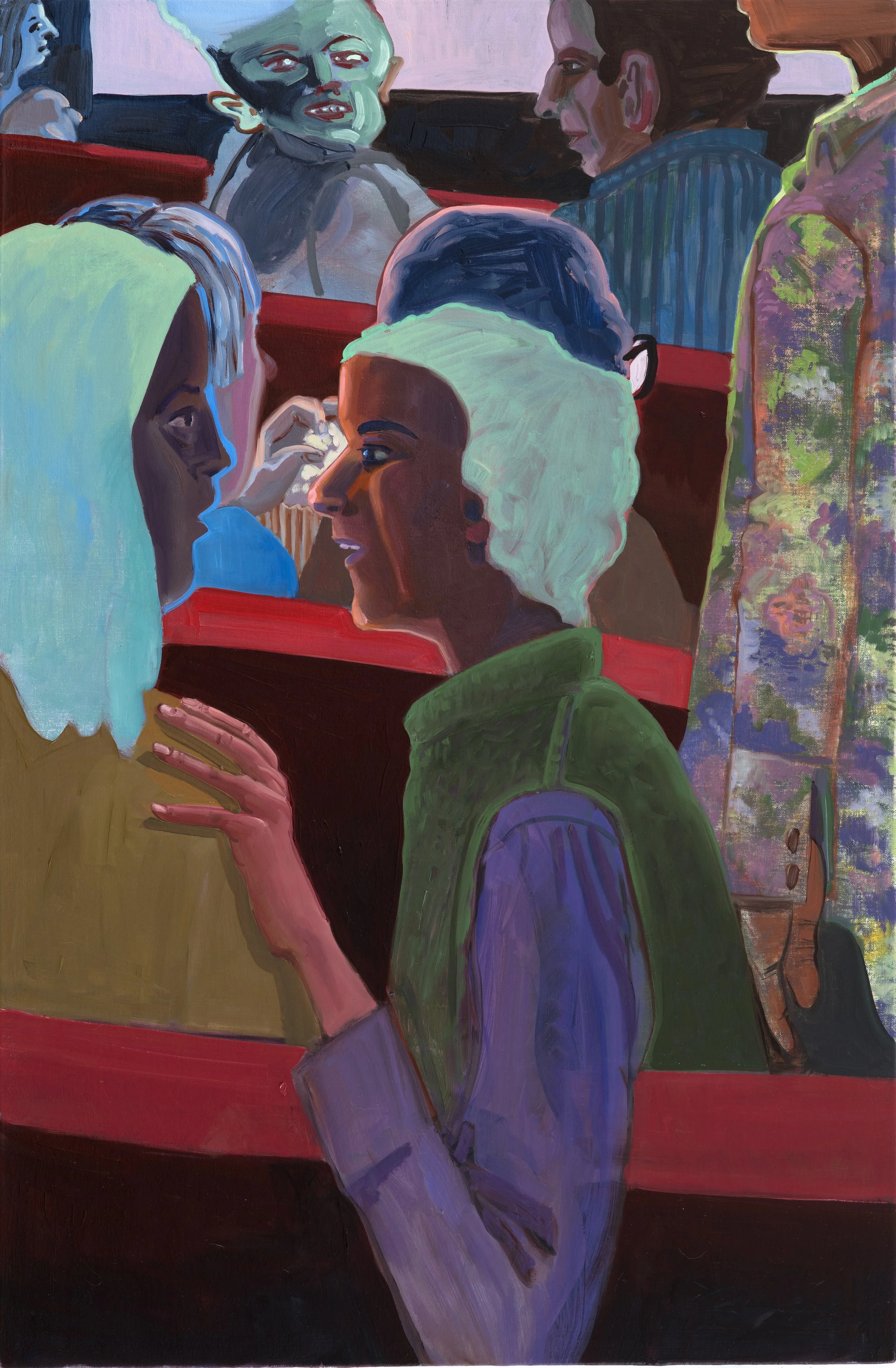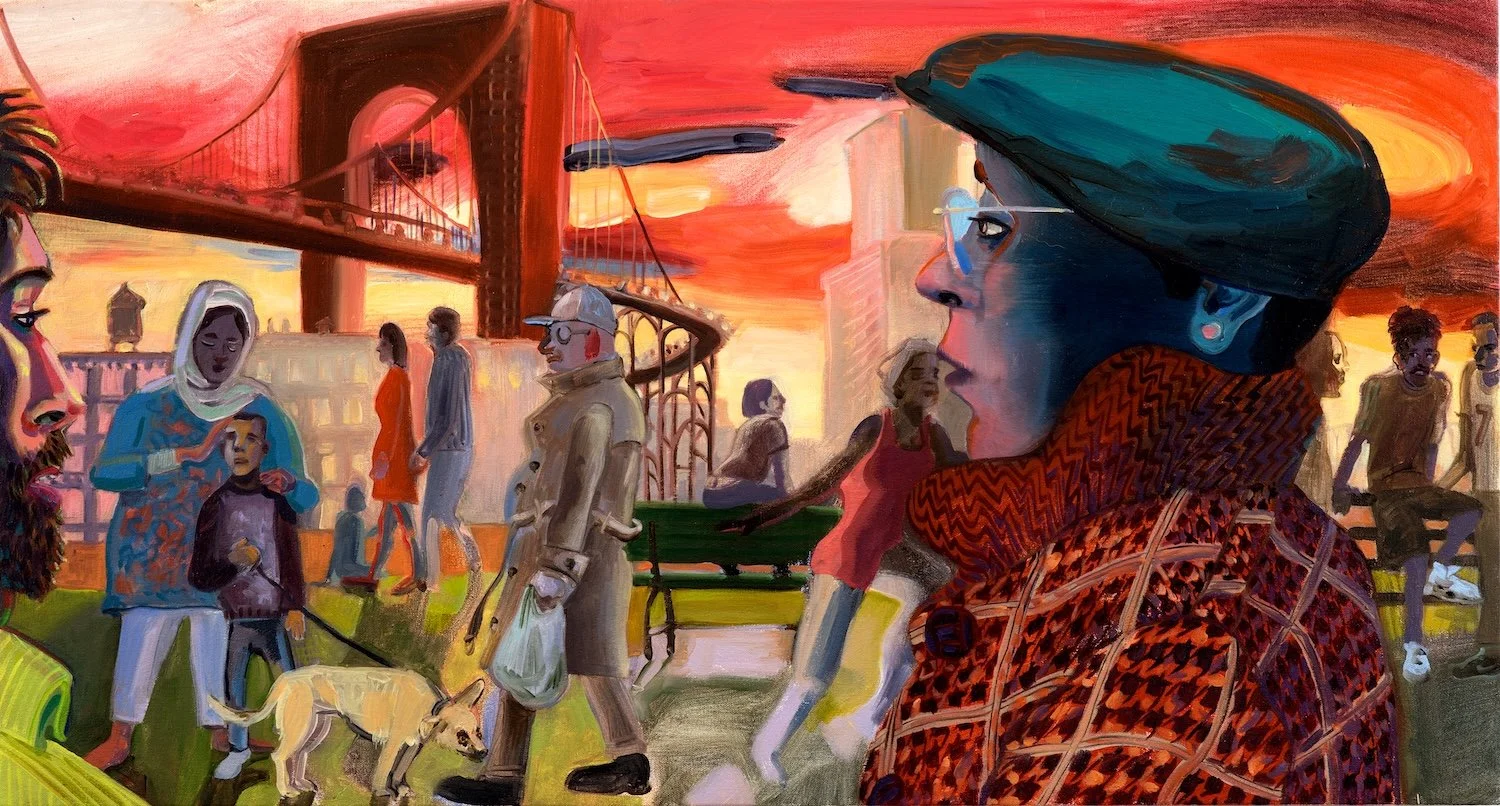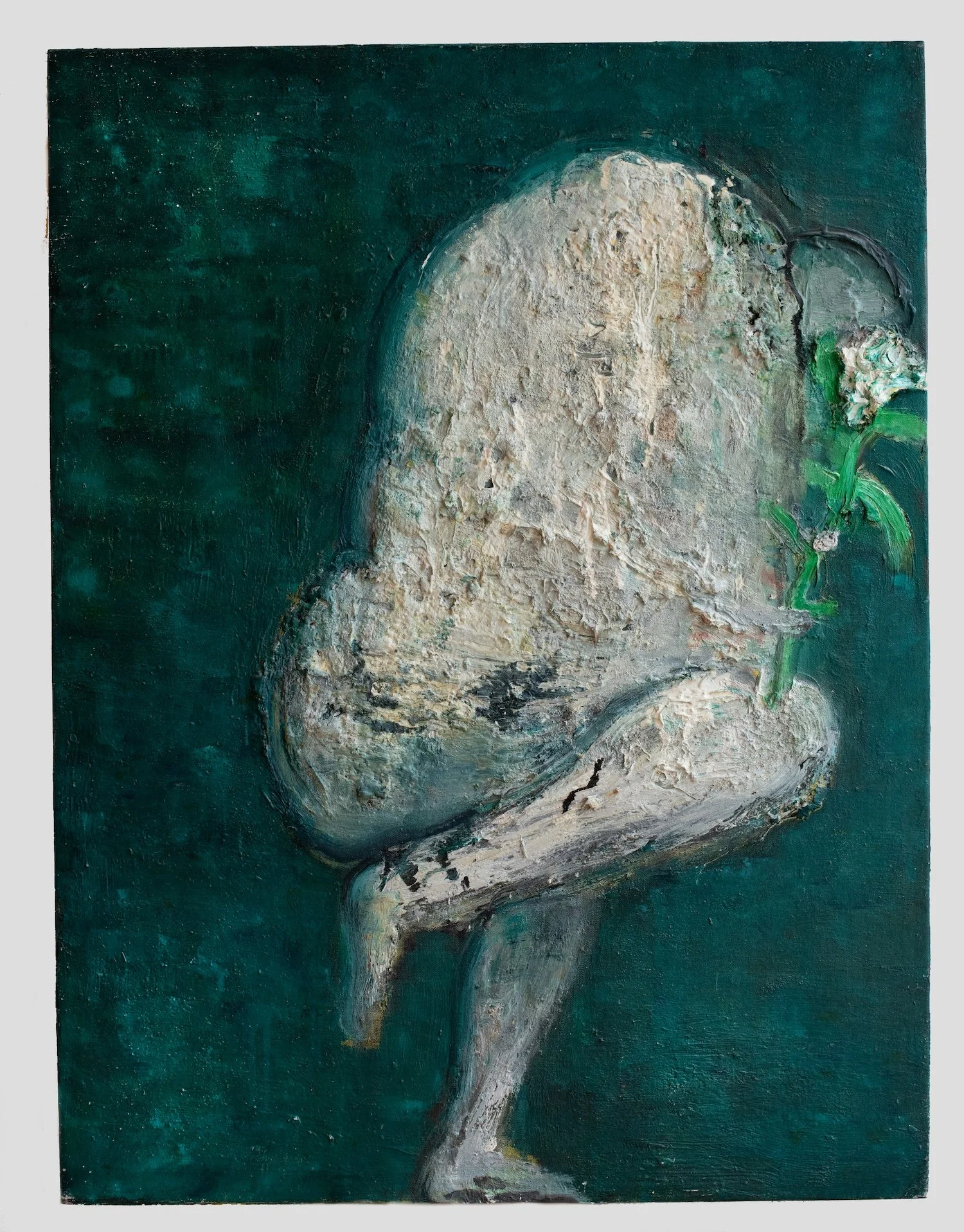3 FRIENDS
August 2 - September 7, 2025
an exhibition of works by
Brenda Goodman,Angela Dufresne, and Mala Iqbal
SELECTED WORKS
BRENDA GOODMAN Untitled | Oil on Wood | 22.5 by 30 inches | 2016
ANGELA DEFRESNE Gulliani skull | Oil on canvas, found wood | 28 by 70 inches (approx.) | 2021-25
BRENDA GOODMAN Untitled (SP - 4) | Oil on Wood | 35 by 30 inches | 2005
BRENDA GOODMAN Untitled 3 | Oil on Masonite | 16 by 12.5 inches | 1962
MALA IQBAL Uncommon Grackle | Oil on canvas | 10 by 8 inches | 2025
ANGELA DEFRESNE Sycamore pods | Oil on canvas on wood | 22 by 35 inches (approx.) | 2023
BRENDA GOODMAN Tangle | Oil and mixed media on wood | 14 by 11 inches | 2025
BRENDA GOODMAN Untitled 2 | 9 by 12.75 inches | Oil on Canvas Mounted on Wood | 2025
BRENDA GOODMAN Sciatica 3 | Oil on Paper Mounted on Board | 6 by 8 inches | 2015
BRENDA GOODMAN Lovely Ed | Oil on Wood | 10.5 by 6.5 inches | 1961
ANGELA DEFRESNE Brenda's Bat | Oil on wood on wood | 25 by 20 inches | 2024
BRENDA GOODMAN Untitled A-9 | Oil on Wood | 12 by 16.2 inches | 2008-09
ANGELA DEFRESNE Humanoidracoon | Oil on canvas on wood | 13 by 17 inches | 2025
BRENDA GOODMAN | Magician | Mixed Media | 7 by 9 by 5 inches | 1978
BRENDA GOODMAN Feeling my way out | Oil on Wood | 6 by 8 inches | 2014
MALA IQBAL Hideout | Oil on canvas | 15 by 13 inches | 2025
BRENDA GOODMAN Covid Time | Oil and Mixed Media on Wood | 12 by 16 inches | 2021
BRENDA GOODMAN Sciatica 12 | Oil on Paper Mounted on Rag Board | 6 by 8 inches | 2016
MALA IQBAL Moonlight Puzzle Woman | Oil on canvas | 10 by 8 inches | 2022
MALA IQBAL Another Day | Oil on canvas | 11 by 14 inches | 2024
ANGELA DEFRESNE Robin Egg | Oil on canvas on wood | 20 by 19 inches | 2023
MALA IQBAL When We First Met (Primeval Best Friends) | Oil on canvas | 22 by 18 1/2 inches | 2024
BRENDA GOODMAN Self Portrait 54 | Oil, Wood, Paper Mache on Wood | 20 by 30 inches | 2006
BRENDA GOODMAN Self Portrait 3 | Oil on Wood | 50 by 72 inches
ANGELA DEFRESNE When I dream of seeing my mother—or is it a woman named peaches | Oil on wood | 16 by 16 inches | 2010-22
BRENDA GOODMAN Tree in the Woods | Oil on Wood | 30 by 36 inches | 1992
ANGELA DEFRESNE Butterfly | Oil on canvas on wood | 30 by 30 inches | 2023
MALA IQBAL Monkey Rider | Gouache on paper on catskill blue stone | 2021-25
ANGELA DEFRESNE Down by the River-relations between city and town and its related non-spiritual cults | Oil on canvas, wood | 87 by 45 inches | 2012-2024
BRENDA GOODMAN Untitled (SP - 4) | Oil on Wood | 35 by 30 inches | 2005
BRENDA GOODMAN Pookie | Pencil on paper on canvas on wood with glass | framed by Angela Dufresne | 20 by 27 inches . (approx) | 2001 & 2025
MALA IQBAL Audience | Oil on canvas | 35 by 23 inches | 2024
MALA IQBAL Park Scene | Oil on canvas | 20 by 37 inches | 2024
BRENDA GOODMAN, ANGELA DEFRESNE, MALA IQBAL Sap Stalk Scion | Oil on Wood with branch | 60 by 72 inches | 2025
ANGELA DEFRESNE More thoughts on the city-town line | Oil on canvas on wood | 40 by 45 inches | 2012-25
MALA IQBAL Boy and Haunted Man | Oil on canvas | 10 by 8 inches | 2025
BRENDA GOODMAN Self-Portrait with Flower | Oil on Wood | 36 by 27 inches | 2016
BRENDA GOODMAN Mounting Thoughts | Oil on Canvas Mounted on Wood | 24 by 28 inches | 2024
The making of Sap Stalk Scion
